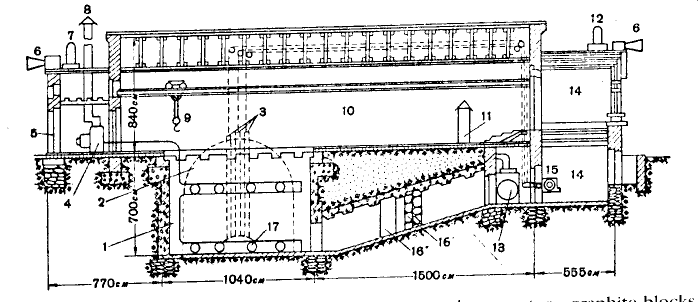






On December 25, 1996 the world's oldest operating nuclear reactor, the 24 kilowatt F-1 (for "Physics-1") at the Kurchatov Institute in Moscow, turned 50 years old.
The F-1 was the first nuclear reactor to operate outside of North America. It started up on Christmas day 1946, at 6 p.m. local time and originally operated at a power level of 10 watts. No other reactor has yet turned 50 while in operable condition. At left is the reactor core being assembled. The first U.S. reactor, the CP-1, was dismantled soon after it began operation.
The F-1 was apparently based on the design of the Hanford 305 reactor, which was presumably obtained through espionage during WWII. It is a natural uranium-graphite reactor with a core diameter of 19 feet, containing 40 tonnes of natural uranium metal and is used today for calibration of neutron flux detectors.
Due to the relatively low operating power level, it still relies on its original fuel loading, which at current power levels should last for several more millenia.
Below, a schematic of the F-1 reactor building. The F-1 is the igloo structure located in a open pit.
